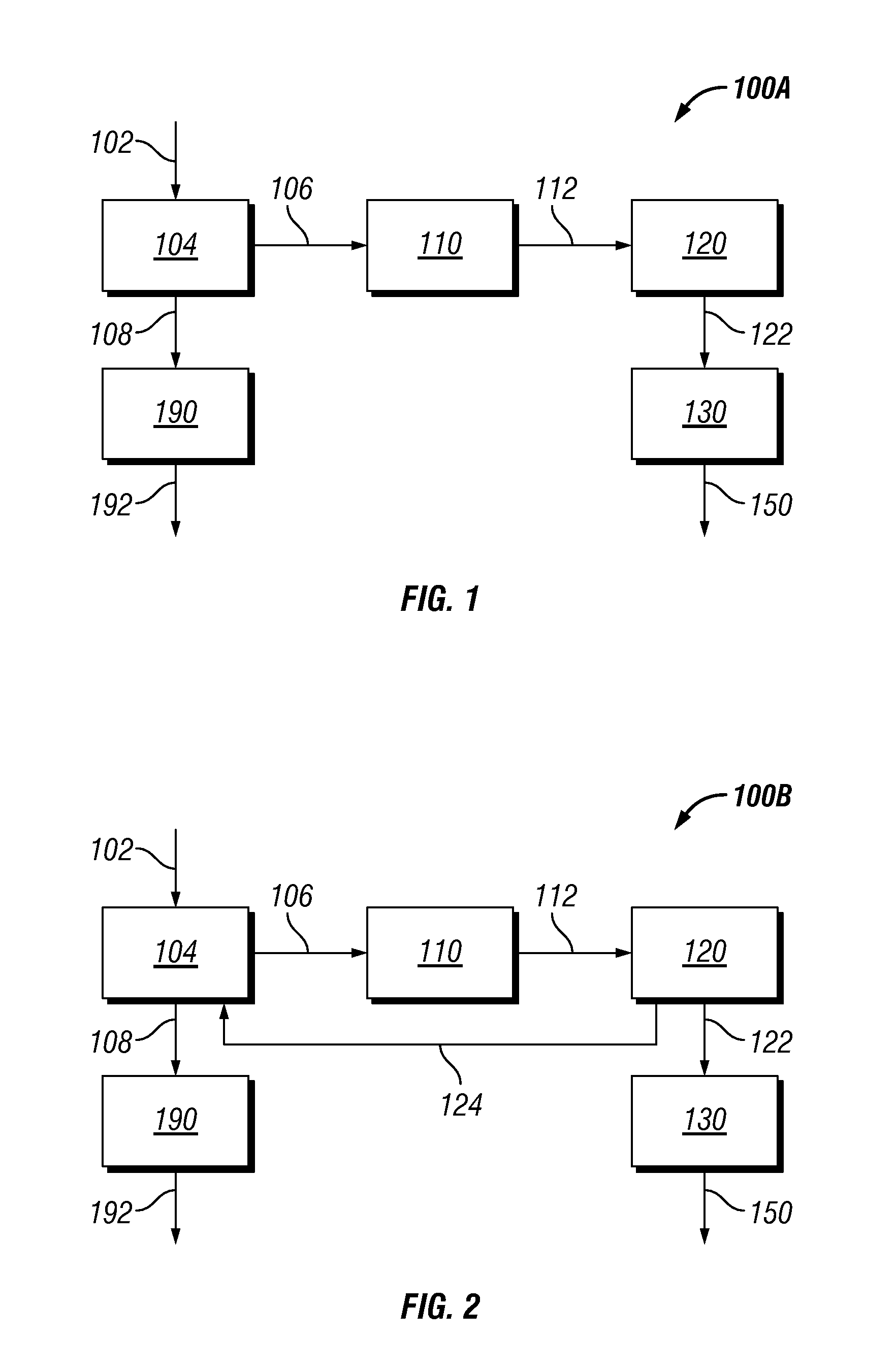Process to produce biofuels from biomass
a technology of biofuels and biomass, which is applied in the direction of biofuels, fuels, papermaking, etc., can solve the problems of difficult penetration of lignocellulose biomass structure with chemicals, difficult to produce fuel from cellulose, and difficulty in breaking down the long chain polymer structure of cellulose into carbohydrates that can be used to produce fuel
- Summary
- Abstract
- Description
- Claims
- Application Information
AI Technical Summary
Benefits of technology
Problems solved by technology
Method used
Image
Examples
example 1
Catalyst Poisoning by N,S Amino Acid
[0107]Two Parr5000 reactors were charged with 20 grams of a mixture of 50% glycerol in deionized water, and 0.35 grams of 1.9% Pt—Re / zirconia catalyst reduced at 400° C. under hydrogen. Glycerol is one of the intermediates derived from monosaccharides or sugar alcohols in the aqueous phase reforming reaction sequence, and can react via APR to form hydrogen and CO2, as well as monooxygenate intermediates such as acetone and 2-propanol. It therefore represents a model component for the study of the APR reaction.
[0108]0.03 grams of the N,S amino acid cysteine were added to reactor B, but not to A. Reactors were pressured with 3500 kPa of H2, and heated to 255° C. for 6.5 hours under conditions corresponding to aqueous phase reforming reaction (APR) with pre-addition of a fraction of the hydrogen required for reaction, before cooling for GC analysis of products. Results indicated 84.7% conversion of glycerol to mono oxygenate and other expected produc...
example 2
Poisoning of Pt / Alumina Catalyst by N,S and N-Only Amino Acid
[0111]The experiment of Example 1 was repeated with 5% Pt / alumina catalyst Escat 2941 (Strem Chemicals). In addition to reactors A (no amino acid) and B (1500 ppm cysteine), a third reactor C was charged with 1500 ppm of alanine, a N-only amino acid. Measured conversons were 56.7%, 42.3%, and 45.4% for reactors A through C, corresponding to apparent first order rate constants of 10.2, 3.0, and 3.2 / h / wt-cat. Addition of 1500 ppm of either N,S or N-only amino acid was observed to decrease glycerol APR reaction rates by more than a factor of 3, for the unpromoted Pt / alumina catalyst.
example 3
Poisoning of Ru Catalyst Under APR Conditions
[0112]Examples 1A and B were repeated with 5% Ru / C Escat 4401 catalyst (Strem Chemicals, 50% wet), with an initial charge of 6000 kPa H2. Conversion for reactor A (no amino acid) was 56.5%, while conversion for reactor B (1500 ppm cysteine) was only 9%. Apparent first order rate constant for B (1500 ppm cysteine) was only 1.7 / h / wt-cat, vs. a rate constant of reactor A of 14.7 / h / wt-cat. This result indicates poisoning by amino acid of a Ru-based catalyst, in testing conducted under aqueous phase reforming (APR) conditions with pre-addition of a fraction of the required hydrogen needed for reaction.
PUM
| Property | Measurement | Unit |
|---|---|---|
| temperatures | aaaaa | aaaaa |
| temperature | aaaaa | aaaaa |
| temperature | aaaaa | aaaaa |
Abstract
Description
Claims
Application Information
 Login to View More
Login to View More - R&D
- Intellectual Property
- Life Sciences
- Materials
- Tech Scout
- Unparalleled Data Quality
- Higher Quality Content
- 60% Fewer Hallucinations
Browse by: Latest US Patents, China's latest patents, Technical Efficacy Thesaurus, Application Domain, Technology Topic, Popular Technical Reports.
© 2025 PatSnap. All rights reserved.Legal|Privacy policy|Modern Slavery Act Transparency Statement|Sitemap|About US| Contact US: help@patsnap.com

